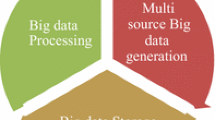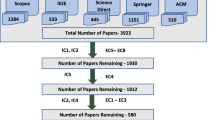Abstract
At present, most of privacy preserving approaches in data publishing are applied to single sensitive attribute. However, applying single-sensitive-attribute privacy preserving techniques directly into data with multiple sensitive attributes often causes leakage of large amount of private information. This paper focuses on the privacy preserving methods in data publishing for multiple sensitive attributes. It combines data anonymous methods based on lossy join with the idea of clustering. And it proposes an improved algorithm of individuation K-anonymity for multiple sensitive attributes—\( MSA(\alpha ,l) \) algorithm. By setting parameters \( \alpha \) and \( l \), it can restrain sensitive attribute values in equivalence class, to make a more balanced distribution of sensitive attributes and satisfy the demand of diversity, then this algorithm is applied to K-anonymity model. Finally, the result of experiment shows that this improved model can preserve the privacy of sensitive data, and it can also reduce the information hidden rate.









Similar content being viewed by others
References
Zhou, S. G., Li, F., Tao, Y. F., & Xiao, X. K. (2009). Privacy preservation in database applications: A survey. Chinese Journal of Computers, 32(5), 847–861.
Liu, X. Y., Wang, B., & Yang, X. C. (2014). Survey on privacy preserving techniques for publishing social network data. Journal of Software, 25(3), 576–590.
Mehmood, A., Natgunanathan, I., Xiang, Y., et al. (2016). Protection of big data privacy. IEEE Access, 4, 1821–1834.
Yi, X., Bouguettaya, A., Georgakopoulos, D. et al. (2015). Privacy protection for wireless medical sensor data. IEEE Transactions on Dependable & Secure Computing, 13(3), 1–1.
Sweeney, L. (2002). K-anonymity: A model for protecting privacy. International Journal on Uncertainty, Fuzziness, and Knowledge Based Systems, 10(5), 557–570.
Casino, F., Domingo-Ferrer, J., Patsakis, C., et al. (2015). A k-anonymous approach to privacy preserving collaborative filtering. Journal of Computer and System Sciences, 81(6), 1000–1011.
Maheshwarkar, B., Patidar, P., Rawa, M. K. et al. (2016). K-AMOA: K-Anonymity model for multiple overlapped attributes. In International conference on information and communication technology for competitive strategies. ACM.
Dai, I., Kikuchi, R., Chida, K. et al. (2015). k-Anonymous microdata release via post randomisation method. In Advances in Information and Computer Security. Springer International Publishing (pp. 225–241).
Han, J. M., Yu, J., Yu, H. Q., & Jia, J. (2011). A multi-level-diversity model for numerical sensitive attributes. Journal of Computer Research and Development, 48(1), 147–158.
Josep, Domingo-Ferrer, & Jordi, Soria-Comas. (2015). From t-closeness to differential privacy and vice versa in data anonymization. Knowledge-Based Systems, 74(1), 151–158.
Han, J. M., Yu, J., Yu, H. J., & Jia, J. (2010). Individuation privacy preservation oriented to sensitive values. Acta Electronica Sinica, 38(7), 1723–1728.
Ren, X., Jia B., & Wang K. (2013). Anatomy: Uncertain data k-anonymity privacy protection algorithm. In 2nd International conference on mechatronics and control engineering (ICMCE 2013). Dalian, Peoples Republic China.
Zheng, Yuhui, Jeon, Byeungwoo, Danhua, Xu, Jonathan Wu, Q. M., & Zhang, H. (2015). Image segmentation by generalized hierarchical fuzzy C-means algorithm. Journal of Intelligent and Fuzzy Systems, 28(2), 961–973.
Yang, X. C., Wang, Y. Z., Wang, B., & Yu, G. (2008). Privacy preserving approaches for multiple sensitive attributes in data publishing. Chinese Journal of Computers, 31(4), 574–587.
Xie, J., Zhang, J. P., Yang, J., & Zhang, B. A. (2014). Privacy preserving approach based on attributes correlation partition for multiple sensitive attributes. Acta Electronica Sinica, 42(9), 1718–1723.
Mubark, A. A., Elabd, E., & Abdulkader, H. (2016). Semantic anonymization in publishing categorical sensitive attributes. In International conference on knowledge and smart technology. IEEE.
Yang, G., Li, J., Zhang, S. et al. (2013). An enhanced l-diversity privacy preservation. In International conference on fuzzy systems and knowledge discovery (pp. 1115–1120).
Xiao, X., & Tao, Y. (2006). Anatomy: Simple and effective privacy pres-Ervation. In Proceedings of the 32nd international conference on very large data bases. Seoul, Korea (pp. 139–150).
Machanavajjhala, A., Gehrke, J., & Kifer, D. (2007). l-diversity :Privacy beyond k-anonymity. ACM Transactions on Knowledge Discovery from Data, 1(1), 1–52.
Sun, J. G., Liu, J., & Zhao, L. Y. (2008). Clustering algorithms research. Journal of Software, 19(1), 48–61.
Chong, Z. H., Ni, W. W., Liu, T. T., & Zhang, Y. (2010). A privacy-preserving data publishing algorithm for clustering application. Journal of Computer Research and Development, 47(12), 2083–2089.
Sun, K., Liu, J., & Wang, X. Y. (2009). K-means cluster algorithm with refined initial center. Journal of Shenyang Normal University (Natural Science), 27(4), 448–450.
Qi, J., Yu, Y., Wang, L. et al. (2016). K*-means: An effective and efficient k-means clustering algorithm. In IEEE international conferences on big data and cloud computing (BDCloud), social computing and networking (SocialCom), sustainable computing and communications (SustainCom) (BDCloud-SocialCom-SustainCom). IEEE Computer Society (pp. 242–249).
Ye, H., Lv, H., & Sun, Q. (2016). An improved semi-supervised K-means clustering algorithm. In IEEE information technology, networking, electronic and automation control conference.
Li, J. T., Liu, Y. H., & Hao, Y. (2016). The improvement and application of a K-means clustering algorithm. In IEEE international conference on cloud computing and big data analysis. IEEE.
Acknowledgements
This paper was supported by the National Natural Science Foundation of China (61402241, 61572260, 61373017, 61572261, 61472192); Scientific and Technological Support Project of Jiangsu Province (BE2015702).
Author information
Authors and Affiliations
Corresponding author
Rights and permissions
About this article
Cite this article
Zhang, L., Xuan, J., Si, R. et al. An Improved Algorithm of Individuation K-Anonymity for Multiple Sensitive Attributes. Wireless Pers Commun 95, 2003–2020 (2017). https://doi.org/10.1007/s11277-016-3922-4
Published:
Issue Date:
DOI: https://doi.org/10.1007/s11277-016-3922-4




